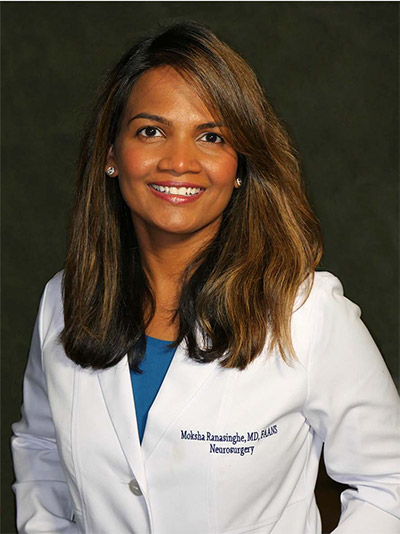- (213) 369-4583
- Monday - Friday
- 9 am - 5 pm
Things to Avoid with Cervical Spinal Stenosis

Oct 04, 2022
A series of connected bones (also known as vertebrae) and soft jelly-like discs make up your spine. These vertebrae together make a canal in which the spinal cord rests serving as a connection between your brain and body. Due to wear and tear or conditions like osteoarthritis, the spinal canal gets narrow and causes a medical condition known as spinal stenosis.

Do you need surgical treatment for Cervical Spinal Stenosis?
Conservative treatments do not provide a permanent solution for cervical spinal stenosis. Sometimes, surgical treatment is the only resort to treat spine conditions. If you have been experiencing cervical spine pain and are not sure what treatment you need, you can consult Dr. Moksha Ranasinghe at Southern California Brain & Spine Surgery. To schedule an appointment, fill out the contact form or call 213-369-4583.
About Cervical Spinal Stenosis
Spinal stenosis can occur in any part of the spine - upper, middle, or lower. If it occurs in the upper region of your spine (C1 - C7) i.e., neck, it is called cervical spinal stenosis. In some cases, stenosis can be severe enough to cause nerve compression or injury to the spinal cord leading to serious medical conditions. However, most of the patients can be treated or at least manage their stenosis pretty well with non-surgical treatments.
Causes
The most common cause of spinal stenosis is the deterioration of the spine that occurs over the years. Some people are also born with a condition in which the spinal canal is not fully developed. Other than these, the following are some of the causes of spinal stenosis;
Disc Herniation - Herniated disc or slipped disc can cramp the space in the spinal canal.
Osteophytes - Osteophytes also known as bone spurs are bony outgrowths developed along the vertebrae. These outgrowths, if large enough, can produce congestion within the spinal column.
Injuries - In case of vehicle accidents or any other event that causes injury to the spine, bones in the spine move out of place. It can result in swelling of the tissues which can put pressure on the nerves within the spine.
Tumors - Cancerous tumors can also be a cause of spinal stenosis as they produce compression in the spine.
In what follows, you will be explained things to avoid with cervical spinal stenosis. Following these guidelines will help you recover from the condition without any invasive procedure.
Things to Avoid with Cervical Spinal Stenosis
Although cervical spinal stenosis is a musculoskeletal condition that cannot be properly treated but managed conservatively. To improve life quality, various conservative treatment protocols are adopted. Daily activities are monitored by patients themselves to accommodate their health conditions. The primary objective of the patients suffering from cervical stenosis is to avoid activities that elevate the symptoms. Hereinafter laid down are the things to avoid with cervical spinal stenosis;
Avoid neck rotation exercises
A patient suffering from cervical spinal stenosis is suggested to avoid exercises that stress the neck and escalate the pain and discomfort. Slight degrees of flexion, extension, and bending of the neck are recommended but rolling or rotation exercises are highly contraindicated in the patient suffering from cervical spinal stenosis. To strengthen the neck and maintain range of motion, a few exercises are preferred including chin tuck, side tilt, and shoulder circles.
Avoid neck strains
One of the major things to avoid with cervical spinal stenosis is to reduce the additional strain on the neck. Neck strain increases the chances of nerve impingement, muscular swelling, and muscle spasms which in turn lead to chronic cervical spinal stenosis. Strains on the neck can be escalated when you bend your neck while using mobiles and laptops for an extended period.
Avoid awkward neck postures
Multiple awkward neck postures are also common in patients suffering from cervical spinal stenosis. Avoid cradling your neck to your ear during calls, carrying overly heavy weights on your head, or one shoulder bag. These postures exert hyperextension stretches and impinge the nerve which in time paramount the joint stiffness and cervical spinal stenosis. Usage of hands-free and two-strap bags to expand weight on both shoulders symmetrically may reverse neurological damages.
Avoid Contact sports
Contact sports such as football, basketball, ice hockey, diving, jogging, and martial arts add additional trauma and are significantly risky to the cervical spine. In advanced cases, patients can face slipped discs and potential nerve impingement as well. Things to avoid with cervical spinal stenosis during contact sports are jerky movements, sudden ballistic movements, and whip-lash injuries which can worsen cervical spinal stenosis.
Avoid poor sleeping positions
Certain sleeping positions aggravate neck rotation which is extremely crucial for patients suffering from cervical spinal stenosis such as sleeping on your gut. Use appropriate neck braces to keep your cervical spine intact while you sleep.
Don’t ignore early symptoms
One of the mistakes people make with cervical spinal stenosis is ignoring indications when they are in the early stages. For example, while performing activities of daily living (ADLs) like dressing, bathing, and showering, if you feel persistent pain in your neck you must get yourself checked timely.
Avoid Alcohol consumption and smoking
Consumption of excessive alcohol impedes the healing process and it can worsen limb numbness and weakness. One of the major things to avoid in cervical spinal stenosis is chronic alcoholism. Similarly, smoking accelerates nerve damage by compromising the vascular supply to the nerve through atherosclerosis. Avoiding smoking habits diminish local hypoxia and nerve damage.
Avoid poor dietary habits
A healthy diet helps in maintaining healthy body weights and keeps the discs hydrated. However, poor dietary habits increase body weight and inflammation as well. Heavyweights and bulky muscles put extra pressure on the cervical spine. Thus, avoiding poor dietary habits help in mimicking pain in patients with cervical spinal stenosis.




